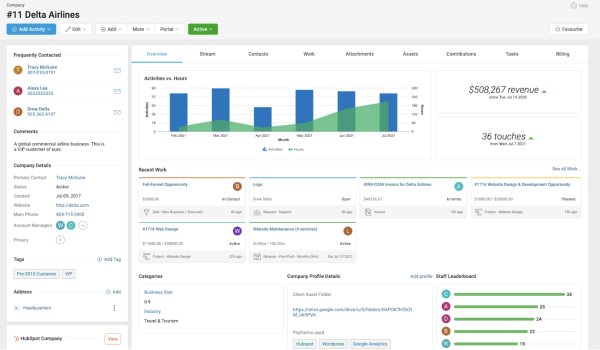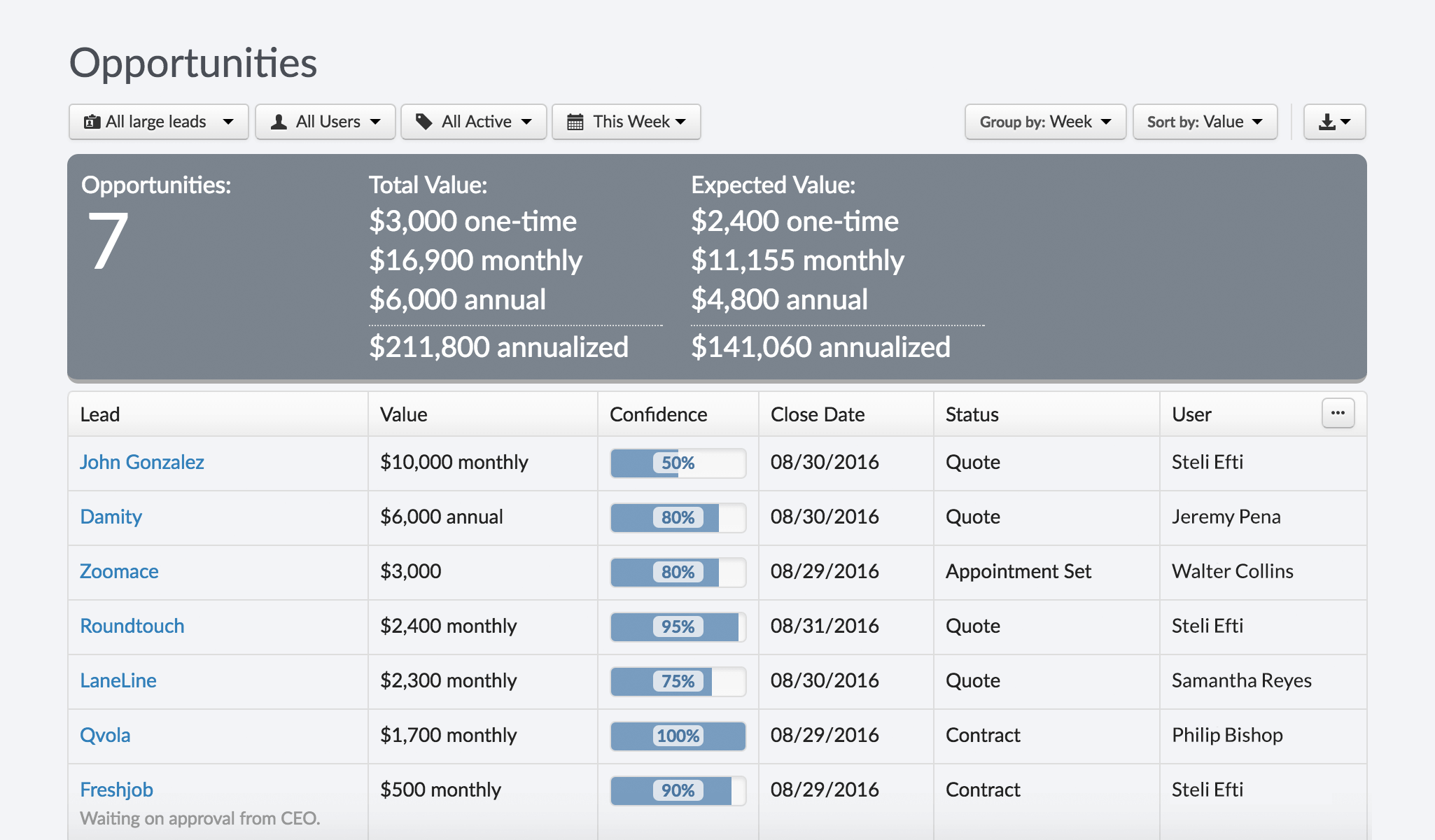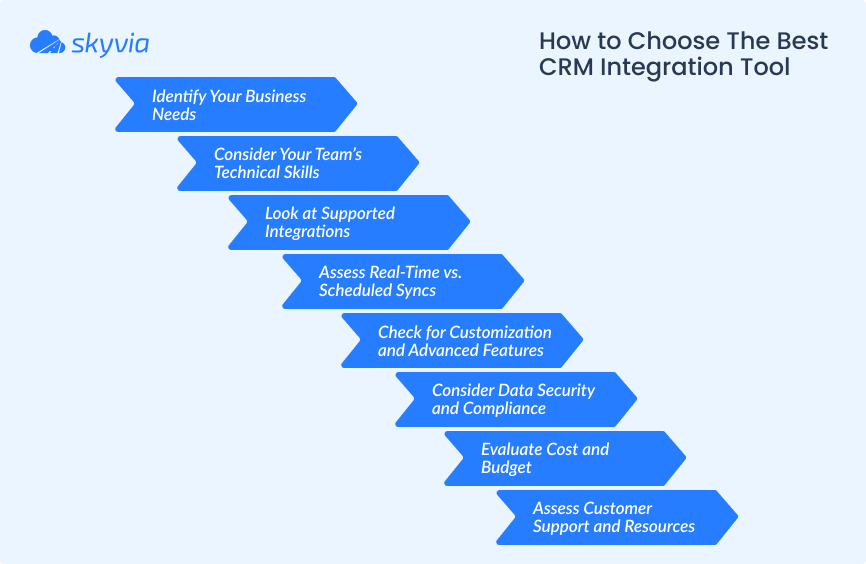
Unlocking Efficiency: The Power of CRM Integration with QuickBooks
In today’s fast-paced business environment, staying organized and efficient is no longer a luxury; it’s a necessity. This is where the powerful combination of Customer Relationship Management (CRM) systems and QuickBooks accounting software comes into play. Integrating your CRM with QuickBooks can revolutionize the way you manage your business, leading to improved productivity, streamlined workflows, and ultimately, enhanced profitability. This article will delve deep into the world of CRM integration with QuickBooks, exploring its benefits, how to implement it, and the best practices to ensure a smooth and successful transition. We’ll cover everything from understanding the fundamentals to choosing the right integration tools and troubleshooting common issues.
Understanding the Basics: CRM and QuickBooks Demystified
Before we dive into the specifics of integration, let’s establish a solid understanding of each system.
What is CRM?
CRM, or Customer Relationship Management, is a software system designed to manage all your company’s interactions with current and potential customers. Think of it as the central hub for all customer-related data. This includes contact information, sales interactions, purchase history, support tickets, and marketing campaigns. The primary goal of a CRM is to improve customer relationships, boost sales, and streamline business processes. Popular CRM platforms include Salesforce, HubSpot, Zoho CRM, and Pipedrive, among many others.
What is QuickBooks?
QuickBooks is accounting software designed to help businesses manage their finances. It’s used for a wide range of financial tasks, including invoicing, expense tracking, payroll, financial reporting, and tax preparation. QuickBooks is a staple for small to medium-sized businesses (SMBs) due to its user-friendliness and comprehensive features. It’s available in various versions, including QuickBooks Online and QuickBooks Desktop.
The Synergy: Why Integrate CRM with QuickBooks?
The real magic happens when you bring these two systems together. CRM integration with QuickBooks allows for a seamless flow of data between your sales and accounting departments. This integration eliminates the need for manual data entry, reduces errors, and saves valuable time. Here’s a closer look at the key benefits:
Eliminating Manual Data Entry and Reducing Errors
One of the biggest time-wasters in any business is manual data entry. Imagine having to manually input customer information, sales data, and invoices into both your CRM and QuickBooks. This process is not only tedious but also prone to errors. Integration automates this process, ensuring that data is accurately synced between the two systems. This minimizes the risk of mistakes, such as incorrect invoice amounts or customer contact information, which can lead to customer dissatisfaction and financial discrepancies.
Improving Sales and Accounting Collaboration
Sales and accounting departments often operate in silos. CRM integration with QuickBooks breaks down these silos by providing both teams with access to the same information. Sales teams can quickly access customer payment history and outstanding invoices, while accounting can easily see sales data and track customer interactions. This improved collaboration leads to better decision-making, faster problem resolution, and improved overall business efficiency.
Gaining Real-Time Visibility into Financial Data
With integrated systems, you have instant access to up-to-date financial information. You can see how sales are impacting your bottom line in real-time, monitor customer payment behavior, and track outstanding invoices. This real-time visibility allows you to make informed decisions, identify potential issues early on, and respond quickly to changing market conditions.
Boosting Productivity and Efficiency
By automating data entry and streamlining workflows, CRM integration with QuickBooks significantly boosts productivity. Your employees spend less time on administrative tasks and more time on core business activities, such as sales, customer service, and strategic planning. This efficiency translates to increased revenue and profitability.
Enhancing Customer Experience
When your sales and accounting teams have access to the same customer data, they can provide a more personalized and responsive customer experience. Sales reps can quickly address customer inquiries about invoices and payments, while accounting can easily access customer purchase history to understand their needs. This improved customer service leads to increased customer satisfaction and loyalty.
Choosing the Right CRM for QuickBooks Integration
Not all CRMs are created equal, and not all integrate seamlessly with QuickBooks. Choosing the right CRM is crucial for successful integration. Here are some popular CRM platforms that offer robust integration with QuickBooks:
Salesforce
Salesforce is a leading CRM platform known for its comprehensive features and scalability. It offers a powerful integration with QuickBooks, allowing you to sync data between sales, customer service, and accounting. Salesforce is a great choice for businesses of all sizes, but it can be more complex and expensive than other options.
HubSpot CRM
HubSpot CRM is a popular choice for SMBs due to its user-friendliness and free version. It offers a solid integration with QuickBooks, allowing you to track sales, manage contacts, and automate marketing campaigns. HubSpot CRM is a good option for businesses that are looking for an all-in-one solution.
Zoho CRM
Zoho CRM is a versatile CRM platform that offers a wide range of features and integrations. It provides a robust integration with QuickBooks, allowing you to sync data between sales, marketing, and accounting. Zoho CRM is a good choice for businesses that are looking for a cost-effective CRM solution.
Pipedrive
Pipedrive is a sales-focused CRM that is known for its simplicity and ease of use. It offers a straightforward integration with QuickBooks, making it a good choice for sales teams that want to streamline their workflows. Pipedrive is particularly well-suited for businesses that prioritize sales pipeline management.
Methods of Integration: How to Connect Your Systems
There are several ways to integrate your CRM with QuickBooks. The best method for you will depend on your specific needs, technical expertise, and budget.
Native Integration
Some CRM platforms offer native integration with QuickBooks. This means that the integration is built directly into the CRM platform and is typically easy to set up and use. Native integrations often offer a seamless data sync and require minimal technical knowledge. The best way to determine if your preferred CRM has a native integration is to check its website or contact their support team.
Third-Party Integration Tools
If your CRM does not offer native integration, you can use third-party integration tools. These tools act as a bridge between your CRM and QuickBooks, syncing data between the two systems. Popular third-party integration tools include:
- Zapier: A versatile automation platform that connects thousands of apps, including CRM and QuickBooks.
- PieSync: A cloud-based integration platform specifically designed for syncing contacts between various apps.
- Automate.io: A platform that allows you to automate workflows between your CRM and QuickBooks.
These tools offer a range of features and pricing plans, so you can choose the one that best fits your needs.
Manual Integration (Not Recommended)
While technically possible, manual integration is not recommended. This involves manually entering data from your CRM into QuickBooks and vice versa. This process is time-consuming, prone to errors, and defeats the purpose of integration. Avoid manual integration whenever possible.
Step-by-Step Guide to Integrating Your CRM with QuickBooks
The specific steps for integrating your CRM with QuickBooks will vary depending on the CRM platform and integration method you choose. However, the general process typically involves the following steps:
- Choose Your Integration Method: Decide whether you will use native integration, a third-party tool, or, in the worst case, manual methods.
- Select an Integration Tool (If Needed): If you’re using a third-party tool, choose the one that best suits your needs and budget.
- Connect Your Accounts: Connect your CRM and QuickBooks accounts to the integration tool. This usually involves entering your login credentials for both systems.
- Map Your Data Fields: Map the data fields between your CRM and QuickBooks. This tells the integration tool which data fields to sync between the two systems. For example, you might map the “Company Name” field in your CRM to the “Customer Name” field in QuickBooks.
- Configure Your Sync Settings: Configure your sync settings, such as the frequency of the sync (e.g., real-time, hourly, daily) and the direction of the sync (e.g., one-way, two-way).
- Test Your Integration: Test your integration to ensure that data is syncing correctly. Do this by creating a new customer in your CRM and checking if the customer data appears in QuickBooks, and vice versa.
- Monitor Your Integration: Monitor your integration regularly to ensure that it’s working properly. Check for any errors or data discrepancies.
Best Practices for a Successful Integration
To ensure a smooth and successful CRM integration with QuickBooks, follow these best practices:
Plan Your Integration Carefully
Before you begin the integration process, take the time to plan carefully. Define your goals for the integration, identify the data you want to sync, and choose the right integration method and tools. A well-defined plan will help you avoid problems and ensure that the integration meets your business needs.
Clean Up Your Data
Before you integrate your CRM with QuickBooks, take some time to clean up your data. This involves removing duplicate records, correcting errors, and ensuring that your data is accurate and consistent. Clean data is essential for a successful integration and will help you avoid data discrepancies.
Test Your Integration Thoroughly
Before you go live with your integration, test it thoroughly. Create test data in both your CRM and QuickBooks and check to see if the data syncs correctly. This will help you identify any issues and make necessary adjustments before you start using the integrated systems in your day-to-day operations.
Provide Training to Your Employees
Make sure that your employees are properly trained on how to use the integrated systems. This includes training on how to enter data, access information, and troubleshoot any issues. Proper training will help your employees use the systems effectively and efficiently.
Monitor Your Integration Regularly
Once your integration is up and running, monitor it regularly. Check for any errors, data discrepancies, or performance issues. Regular monitoring will help you identify and resolve any problems quickly, ensuring that your systems continue to function smoothly.
Seek Professional Help if Needed
If you’re struggling with the integration process, don’t hesitate to seek professional help. There are many consultants and integration specialists who can help you set up and manage your integrated systems. They have the expertise to troubleshoot complex issues and ensure that your integration is successful.
Troubleshooting Common Integration Issues
Even with careful planning and execution, you may encounter some common integration issues. Here are some troubleshooting tips:
Data Synchronization Errors
Data synchronization errors can occur for a variety of reasons, such as incorrect field mapping, data format issues, or connectivity problems. To troubleshoot these errors, review your integration settings, check your data formatting, and ensure that your accounts are properly connected. Also, check the logs provided by your integration tool to identify the source of the errors.
Duplicate Data
Duplicate data can occur if you have existing data in both your CRM and QuickBooks. To avoid duplicates, clean up your data before you begin the integration process. You can also configure your integration tool to prevent duplicates or merge existing records.
Missing Data
Missing data can occur if data fields are not properly mapped or if the sync settings are not configured correctly. Review your field mappings and sync settings to ensure that all the necessary data is being synced. Also, check the logs to see if any errors have occurred during the data transfer.
Connectivity Issues
Connectivity issues can occur if there are problems with your internet connection or with the integration tool’s servers. Check your internet connection and ensure that your integration tool is functioning properly. Contact the integration tool’s support team if you’re experiencing persistent connectivity issues.
The Future of CRM and QuickBooks Integration
The integration of CRM and QuickBooks is constantly evolving. As technology advances, we can expect to see even more sophisticated integrations with enhanced features. Here are some trends to watch:
Artificial Intelligence (AI) and Machine Learning (ML)
AI and ML are increasingly being used to automate tasks, improve data analysis, and provide insights. We can expect to see AI-powered integrations that can automatically identify sales opportunities, predict customer behavior, and provide personalized recommendations. Imagine your CRM and QuickBooks working together with AI to forecast sales, optimize pricing, and personalize customer interactions.
Greater Automation
Automation will continue to be a major focus. Integration tools will become even more sophisticated, automating a wider range of tasks, such as invoice generation, payment processing, and financial reporting. This will free up even more time for businesses to focus on core activities.
Improved User Experience
Integration platforms will focus on improving the user experience. This will include more user-friendly interfaces, simplified setup processes, and better reporting and analytics. The goal is to make the integration process as seamless and intuitive as possible.
Enhanced Data Security
Data security will continue to be a top priority. Integration tools will implement advanced security measures to protect sensitive customer and financial data. This includes encryption, multi-factor authentication, and compliance with industry regulations.
Conclusion: Embracing Integration for Business Success
CRM integration with QuickBooks is a powerful tool that can transform your business. By automating data entry, improving collaboration, and gaining real-time visibility into your financial data, you can boost productivity, enhance customer experience, and drive growth. By understanding the basics, choosing the right integration method, and following best practices, you can successfully integrate your CRM with QuickBooks and unlock the full potential of your business. Don’t wait; embrace the power of integration and take your business to the next level. The future of business is connected, and with the right tools and strategies, you can thrive in this new era of efficiency and innovation. The time to integrate is now!

